Believe me when I tell you there’s more to landscape photography than wide-angle lenses and a dramatic horizon. While those two things can indeed help you get an awesome photo, there’s a lot you can do (or, in this case, avoid doing) that can make your landscape images look like a million bucks. So, next time you’re out there shooting, ask yourself if you’re committing any of these common landscape photography mistakes that could be holding you back.
1. Abolish Those Crooked Horizons
This one almost goes without saying, but since it’s the one rule of landscape photography that I abide by 100% of the time, I think it’s certainly worth a mention. When you’re taking landscapes, keep those horizons straight–as straight as it appears to your eye when you’re standing there with your camera composing your frame. I know, I know…It’s crazy to think such a small detail can make that much of a difference, but it does. Really.
Many digital cameras offer virtual horizon option, which helps you to get pinpoint accuracy, but there are other ways to get the horizon as straight as an arrow, too, such as comparing the straightness of the horizon to one of the horizontal lines in the grid of your viewfinder or attaching a small bubble level to your camera.
At the very least, make sure you’re at least paying attention to it, even if that means you have to “eyeball” it without the help of tools or gadgets.

An uneven horizon tends to be distracting by making things look off-kilter. Photo: Crooked Horizon by Island Joe / CC BY 2.0
2. Wide Angle Lenses Are Great, But…
…they shouldn’t be thought of as the only lens to use when shooting landscapes. So, mix it up every now and again. Feel free to pull out that long lens, it’s completely okay to zoom in on occasion! In many cases, it will allow you to narrow in on a compelling subject or point of interest within your landscape that can elevate the photo to an entirely new level.
→ Related reading: Landscape Lenses: The Characteristics
Which leads me to this next bit of advice…
3. Don’t Just Look At The Big Picture
I’m going to venture and guess you’ve heard the phrase “more than meets the eye” at least once or twice in your lifetime. It can apply to an almost infinitesimal amount of agendas, including becoming a better photographer. It’s easy to look at a gorgeous sunset colorfully behind a grand mountain range and conclude it would make a great photograph.
But, the keenest photographers know those massive breathtaking views are being powered by a collective of much smaller, yet equally powerful scenes.
They may appear as a quaint fishing vessel quietly slicing through fog and water or the silhouette of an animal against the backdrop of a sunrise. There could be any number of things happening that could make a landscape photo stand out from others and all you have to do is look to for them.
4. Wait For It
When you can, don’t be in a rush. Taking seriously awesome photos can take a seriously awesome amount of time and landscape photography takes a ton of patience. It’s not uncommon for a professional photographer to spend months, sometimes years trying to capture what they envision as a perfect composition.
While we won’t always have the time to be able to get the shot we want–whether it be due to bad light that just doesn’t want to make a change for the better or due to the fact you’re already running late to an important meeting–that doesn’t mean we can’t make the best photo we can at the time, then go back at a later date and try it again.
Patience is key. Take your time to study the scene and think about the best, most unique and eye catching way to photograph it. If a specific composition means a lot to you and you can’t get it just right the first time, don’t sweat it–get out there again and try again!
5. Blurry Photos
In landscape photography, you’ll generally want as much of the photo in sharp focus as possible. Of course, there are exceptions, like when you want to create an artistic abstract photo or use bokeh to selectively blur part of the photo, but in general, sharp focus is the goal.
What do you do when your photos are blurry?
The Fixes:
Faster Shutter Speed – Blurry photos are often the result of a shutter speed that is too slow. You can use manual mode or shutter priority mode to set a faster shutter speed in order to freeze the motion and reduce or eliminate blur. Of course, the ideal shutter speed will depend on the subject of the photo and the amount of movement in the scene.
Change the Aperture – Aperture is 1/3 of the exposure triangle and will also play a big role in the sharpness of your photos. Larger apertures (smaller f-stop numbers) will generally produce more bokeh to blur the background, so many new photographers will go to the opposite extreme in search of maximum sharpness.
However, most lenses will not produce the sharpest images at the extreme end. For example, many lenses will produce the sharpest images at f/11 – f/16, rather than going to f/22.
Test your lenses by photographing the same subject with different aperture settings, and then view the images in full size on a large computer monitor. See what aperture produces the best sharpness with your lenses and then try to keep the aperture as close to that setting as possible when you want to maximize sharpness.
Use a Tripod – If you want to get your photos as sharp as possible, you should be using a tripod. If you don’t currently use a tripod, you’ll probably see a noticeable increase in the quality of your landscape photos as soon as you start using one. A tripod will give you maximum stability, removing any vibration from holding the camera.
6. Boring Photos
You can’t rely on beautiful scenery to lead to an amazing photo. Boring photographs can be taken at the Grand Canyon, Yosemite Valley, the Canadian Rockies, and any other amazing landscape that you can think of.
What do you do when your photos are boring and do not accurately represent the beauty of a scene?
The Fixes:
Choose a Focal Point – One of the most common causes of boring photos is the lack of a focal point. One of the challenges with photographing incredible natural beauty is that you’ll be tempted to simply fit as much of the scene into your composition as possible, and snap the photo assuming that it will be great.
However, in order for a photograph to be interesting, it needs to have a focal point. When you are composing your shot, think about what you want the viewer to see.
Follow One of the Many Composition Rules – There are many different composition rules or guides that you can follow with landscape photography. Of course, the rule of thirds is extremely popular, but there are plenty of others.
While these are not hard and fast rules that need to be strictly followed at all times, they can help you to stay on track, especially if you’re just learning. When you’re having trouble creating a photograph that you can be proud of, turn to one of the rules of composition and you’re likely to find something that helps you to get a better photo.
Find More Interesting Angles and Subjects – The same subject can look completely different if it is photographed from a different angle or perspective. One angle or perspective may produce a boring photo, but a simple change can lead to a much more interesting photo of the same subject.
Likewise, you can also look around the area to find other subjects that may be more interesting. Take your time and find subjects and angles that create interesting compositions, and don’t settle for boring photos.
7. Bland Sky
The sky is a critical element of many landscape photos. A dynamic sky can make a great photograph and a bland sky can lead to a boring photo. To some extent, the details of the sky are outside of your control, but there are some things you can do.
The Fixes:
Photograph During Golden Hour – In general, the best lighting for your landscape photos with occur around the time of sunrise or sunset. The golden hour, just after sunrise and just before sunset, is often recognized as the best time to photograph landscapes due to a higher probability of favorable light. The blue hour, just before sunrise and just after sunset, can be equally awesome.
One of the best things you can do for your landscape photography is to get out and work the best hours of the day. It won’t always be convenient and you’ll need to work with limited windows of lighting, but you can drastically improve your chances of capturing a photograph with a beautiful sky by photographing around sunrise and sunset.
Watch the Weather – Weather will also play a huge role in your landscape and nature photography. Cloudless days tend to produce boring blue skies that generally are not the best. Partly cloudy days will give the sky some character, and having clouds in the sky will also greatly impact the look of a sunset or sunrise.
Of course, the weather is outside of our control. But you can pay attention to the weather forecast and make an effort to get out when the conditions will be the best.
8. Over processed
Post-processing is an essential part of digital landscape photography, but you don’t want your photos to look unrealistically edited. A little bit of saturation goes a long way.
The Fix:
Go Easy with the Adjustments – Regardless of whether you are using Lightroom, Luminar, or any other software, you don’t want to push the boundaries when it comes to sliders and adjustments. Take things too far and your photo will have unrealistic colors and/or artifacts or haloing from excessive sharpening.
When it comes to photo editing and landscapes, less is usually more.
9. Clichéd Photos
Do your photos look the same as everyone else’s photos from the same spot? This is especially common with popular destinations and epic locations that have been photographed millions of times.
The Fixes:
Spend More Time Scouting and Researching Locations – One of the best ways to get more interesting photos at popular locations is to put more effort into researching and scouting. Before your trip, you can do plenty of research online to find the best spots and unique vantage points that aren’t always photographed. Once you’ve arrived, you can spend some time scouting the area before it is time to actually take the photograph.
I mentioned earlier that the hours around sunrise and sunset are generally going to be the best times to photograph landscapes. If you find yourself struggling to photograph during the harsh midday light, shift your focus to scouting. Instead of trying to take photos in bad conditions, spend your time looking for the best spots and views so you’re prepared for the next sunrise or sunset.
Find Different Options – Most people stick to easy views. This includes roadside pull-offs and overlooks that are easy to access. If you’re willing to work a little harder and put in some effort, you can usually find different views or completely different subjects that many people don’t see.
Making mistakes is a part of photography, and thankfully there are a lot of ways that you can learn and improve your photos as a result of your own mistakes. Embrace your mistakes and use them as a way to improve.
10. Shooting in Auto Mode
Auto mode is the quick and easy way to take a photograph, but if you hope to create high-quality landscape images, you will need to get out of auto mode. While manual mode gives you the most control, it can be a little overwhelming if you’ve always shot in auto mode. Aperture priority is easier than shooting in full manual, but it still gives you a lot of control.
If you’re intimidated by shooting in manual mode, try aperture priority instead, and after a while, you can try manual mode once you are comfortable.
Shooting in shutter priority mode is a good option for situations where the shutter speed will have a drastic impact on the photograph. For example, if you want to give a waterfall a bit of a blurred look, you can use shutter priority mode to slow down the shutter speed a little. Or if you are photographing wildlife and you want to freeze the action and prevent any blur, you can use shutter priority for a faster shutter speed.
If you’re looking to learn more about how to use the different modes, we have a few articles that can help.
11. High ISO
The ISO setting will impact the amount of noise or grain in a photo. While there are a time and place for noise or grain, in general, you’ll want to minimize the noise in your landscape photos. Because of this, you’ll want to keep the ISO setting as low as possible.
If you’re shooting in auto mode, you’ll have no control over the ISO setting. If you’re shooting in aperture priority or shutter priority, you can set the ISO or you can let the camera determine the ISO. Obviously, I recommend setting the ISO so that you can avoid unnecessary noise in your photos.
When you’re using aperture priority, set the aperture and the ISO and only let the camera dictate the shutter speed. When you are using shutter priority, set the shutter speed and ISO and only allow the camera to determine the aperture.
In some cases, a high ISO may not create enough noise that is noticeable at first glance, but when you create larger prints or view the image at 100% you will notice the noise.
12. Forgetting to Turn Image Stabilization On/Off
If your lens has an Image Stabilization (Canon) or Vibration Reduction (Nikon) option, you’ll want to turn it on when you are shooting handheld and off when you are using a tripod. The image stabilization can actually reduce the sharpness when you are using a tripod.
Because you’ll be switching back and forth, it’s easy to forget this setting. Try to get in the habit of checking the setting, or else you’re likely to find that you have it in the wrong state at times.
13. Forgetting to Switch from Auto/Manual Focus
Likewise, most lenses will allow you to switch between manual and autofocus. In most cases, you’ll probably want to use autofocus, but there are times when manual focus may be necessary. Be sure to check the lens before photographing, or you may get a blurry photo that is out of focus.
14. Forgetting to Clear Exposure Compensation
There may be times when you are using your camera’s exposure compensation functionality to get photos lighter or darker. If you use aperture priority or shutter priority, adjusting the exposure compensation can be really helpful for getting photos that are properly exposed.
However, it’s easy to forget that you’ve made an adjustment and then all of your photos can be too light or too dark because the exposure compensation is still set without you realizing it. It’s always helpful to check and make sure that exposure compensation is turned off before you start shooting (unless you want it to be set).
I’ve had many times when my photos were too bright or too dark, only to realize that I had forgotten to turn off the exposure compensation.
15. Not Bracketing (When Needed)
Bracketing exposures can be a very effective way to ensure that you get a properly exposed photo. It can also be extremely helpful when you want to merge multiple exposures together to create an HDR image.
Most cameras also make it very easy to automatically fire off several bracketed exposure. All you need to do is adjust the setting and you’ll have bracketed exposures that you can use later.
I don’t recommend that you always shoot with exposure bracketing, because you’ll wind up with far more photos that you need to go through, but when there are very dark shadows and bright highlights in the same scene, it’s a good idea to bracket your exposures.
16. Forgetting to Turn a Circular Polarizer
This one isn’t exactly a setting on your camera, but it goes along with all of the others that have been mentioned so far, so I decided to include it.
A circular polarizer can be a very valuable tool for landscape and nature photography. The polarizer can reduce glare from water or wet rocks, increase contrast in skies, and produce more vibrant colors. But, in order for it to work, you’ll need to rotate the polarizer at the end of your lens until it has the desired effect.
It’s a common mistake to forget to adjust the polarizer, which means that it won’t be working as well as it could.
For more details, see Tips for Using Polarizers Effectively.
When you’re shooting, keep these settings in mind and you’ll be in a better position to get the photos that you want.
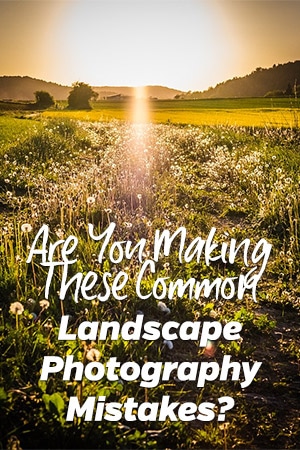
Photos used in this blog post are licensed as Creative Commons BY 2.0






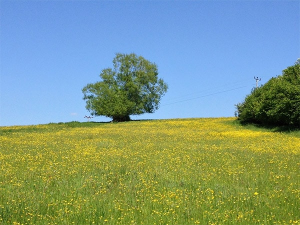
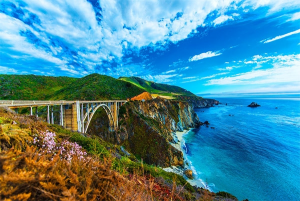
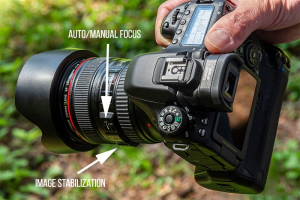


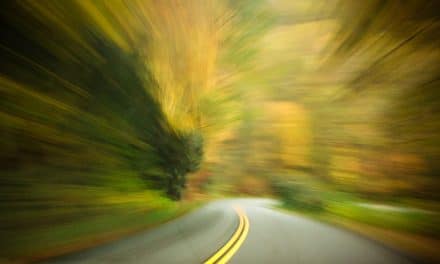

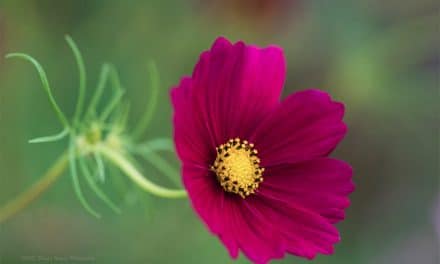
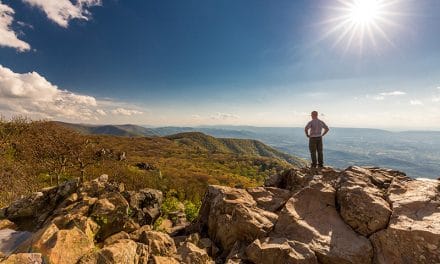





Since I am swaying more towards landscape and nature photography from weddings,and events, these tips – I will save(If you don’t mind). Being somewhat new at this,I am constantly trying to pick up on new pointers/tips. Thx.
Antonio,
Thanks for your comment. I’m glad to hear that the tips are useful for you.